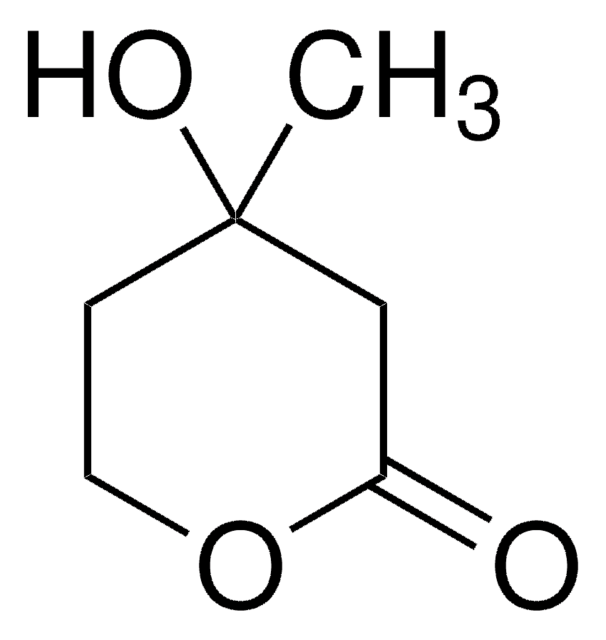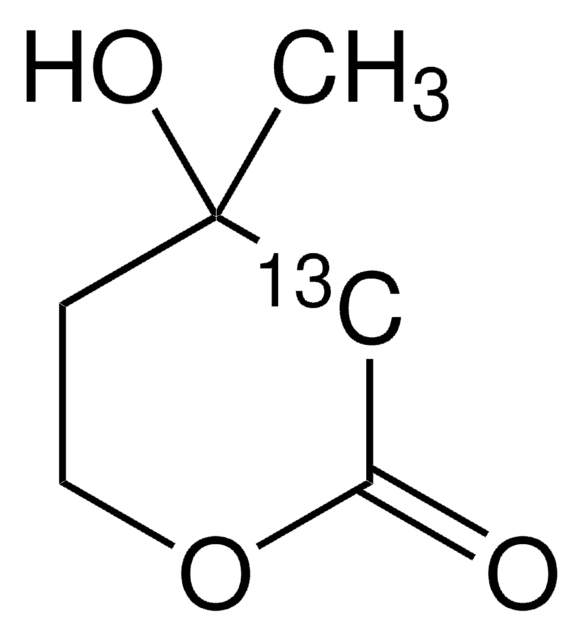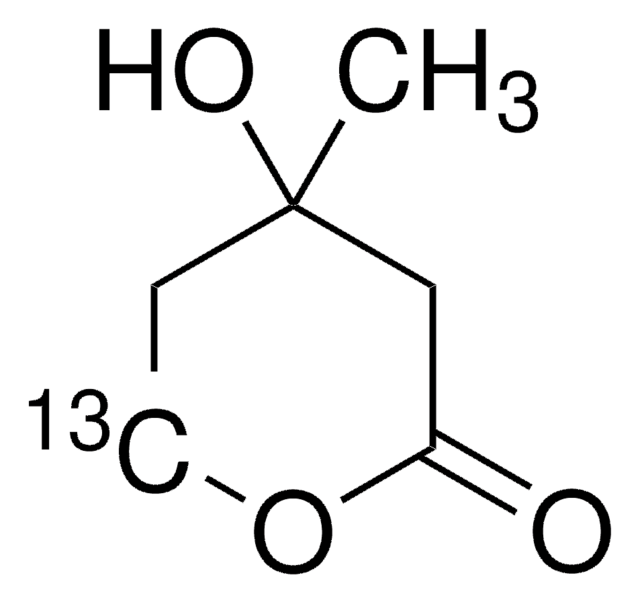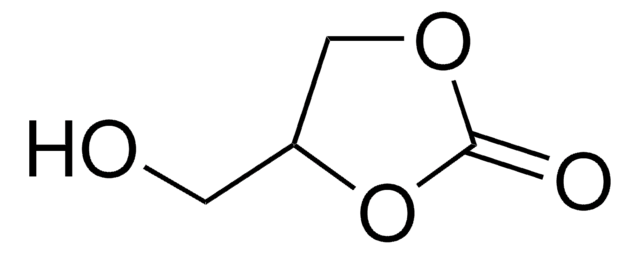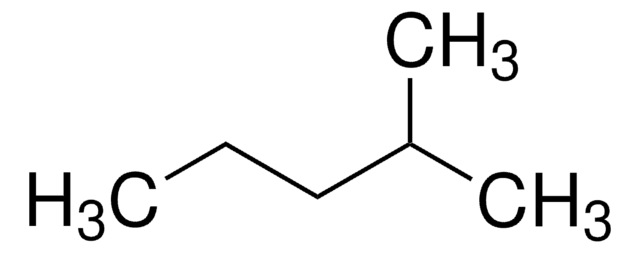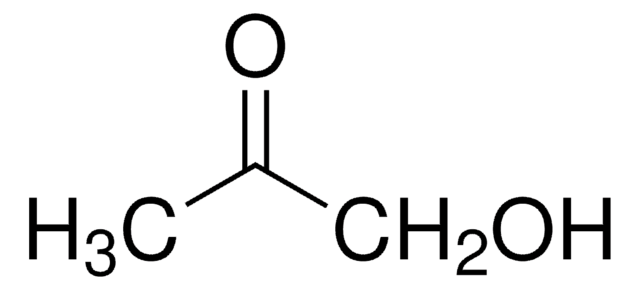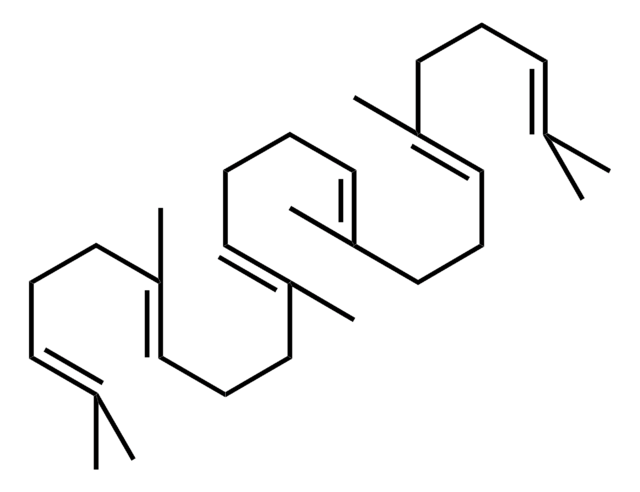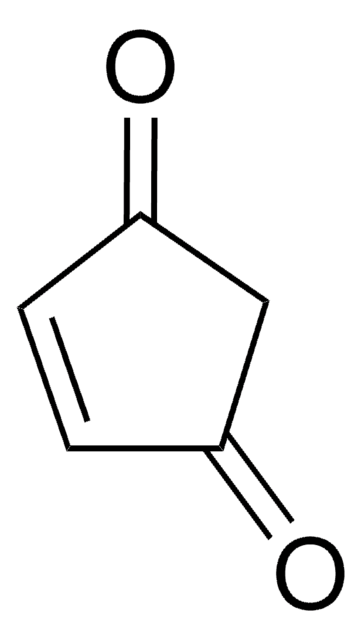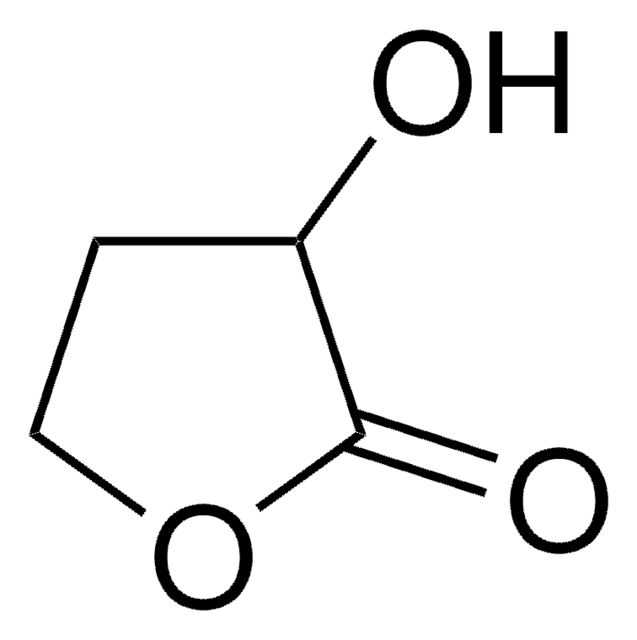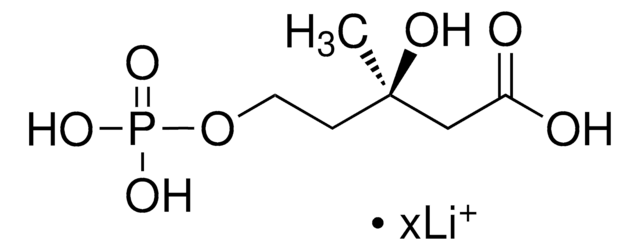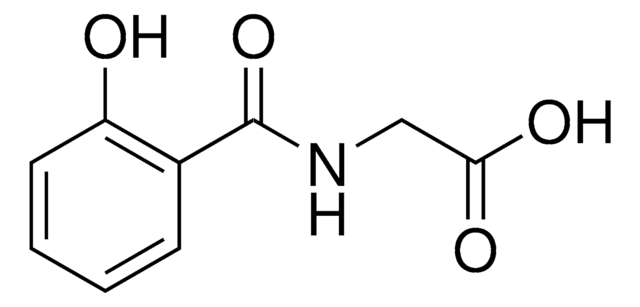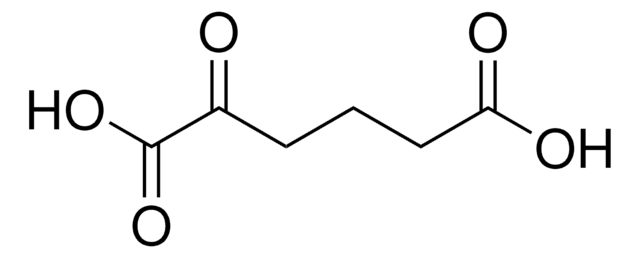68519
(R)-(−)-Mevalonolactone
≥90.0% (GC)
Synonym(s):
(R)-3-Hydroxy-3-methyl-δ-valerolactone, (R)-Mevalolactone, D-Mevalonic acid lactone
Sign Into View Organizational & Contract Pricing
All Photos(1)
About This Item
Empirical Formula (Hill Notation):
C6H10O3
CAS Number:
Molecular Weight:
130.14
MDL number:
UNSPSC Code:
12352204
PubChem Substance ID:
Recommended Products
Assay
≥90.0% (GC)
form
liquid
optical activity
[α]/D -20±3°, c = 1 in ethanol
storage temp.
2-8°C
SMILES string
C[C@@]1(O)CCOC(=O)C1
InChI
1S/C6H10O3/c1-6(8)2-3-9-5(7)4-6/h8H,2-4H2,1H3/t6-/m1/s1
InChI key
JYVXNLLUYHCIIH-ZCFIWIBFSA-N
Looking for similar products? Visit Product Comparison Guide
Biochem/physiol Actions
Classical enantiomerically pure metabolite in biosynthetic pathways leading to sterols, terpenes, carotenoids, and other natural products.
Packaging
Amber colored round bottle
Storage Class Code
10 - Combustible liquids
WGK
WGK 3
Flash Point(F)
235.4 °F - closed cup
Flash Point(C)
113 °C - closed cup
Personal Protective Equipment
dust mask type N95 (US), Eyeshields, Gloves
Choose from one of the most recent versions:
Already Own This Product?
Find documentation for the products that you have recently purchased in the Document Library.
Customers Also Viewed
Akira Honda et al.
Journal of lipid research, 48(5), 1212-1220 (2007-02-03)
We have developed a new sensitive and specific nonradioisotope assay method to measure the activity of HMG-CoA reductase, the rate-controlling enzyme in the cholesterol biosynthetic pathway. This method was based upon a stable isotope dilution technique by liquid chromatography-tandem mass
Jenna Waldron et al.
Annals of clinical biochemistry, 48(Pt 3), 223-232 (2011-03-01)
Mevalonic acid (MVA) is synthesized at an early and rate-limiting step in the biosynthesis of cholesterol by the enzyme hydroxymethylglutaryl coenzyme A (HMG-CoA) reductase, and is a useful measure of statin efficacy or treatment. A liquid chromatography-tandem mass spectrometry (LC-MS/MS)
Synthesis and HMG-CoA reductase inhibition of 2-cyclopropyl-4-thiophenyl-quinoline mevalonolactones.
Shikui Zhao et al.
Bioorganic & medicinal chemistry, 17(23), 7915-7923 (2009-11-03)
A novel series of 2-cyclopropyl-4-thiophenyl quinoline-based mevalonolactones were synthesized from the substituted anilines by several reactions. Among them, (4R,6S)-6-[(E)-2-(2-cyclopropyl-6-fluoro-4-(4-fluoro-thiophenyl)-quinoline-3-yl)-ethenyl]-3,4,5,6-tetrahydro-4-hydroxy-2H-pyran-2-one (1d), (4R,6S)-6-[(E)-2-(2-cyclopropyl-6-fluoro-4-(3-methoxy-thiophenyl)-quinoline-3-yl)-ethenyl]-3,4,5,6-tetrahydro-4-hydroxy-2H-pyran-2-one (1f) and (4R,6S)-6-[(E)-2-(2-cyclopropyl-6-fluoro-4,7-di(3-methoxy-thiophenyl)-quinoline-3-yl)-ethenyl]-3,4,5,6-tetrahydro-4-hydroxy-2H-pyran-2-one (1q) showed potent HMG-CoA reductase inhibitory activity comparable with pitavastatin.
Jessica Fuhrmeister et al.
Toxicology letters, 215(3), 219-227 (2012-10-25)
Statins are the most widely used drugs for the treatment of hypercholesterolemia. In spite of their overall favorable safety profile, they do possess serious myotoxic potential, whose molecular origin has remained equivocal. Here, we demonstrate in cultivated myoblasts and skeletal
Ya Sh Schwartz et al.
Bulletin of experimental biology and medicine, 148(3), 406-409 (2010-04-17)
We studied the effects of cholesterol, its oxidized derivatives mevalonate, and nuclear receptor agonists LXR, RXR, and FXR on the production of transforming growth factor-beta1 (TGF- beta1) by macrophages. After recruiting of macrophage monocytes into the focus of inflammation, the
Our team of scientists has experience in all areas of research including Life Science, Material Science, Chemical Synthesis, Chromatography, Analytical and many others.
Contact Technical Service